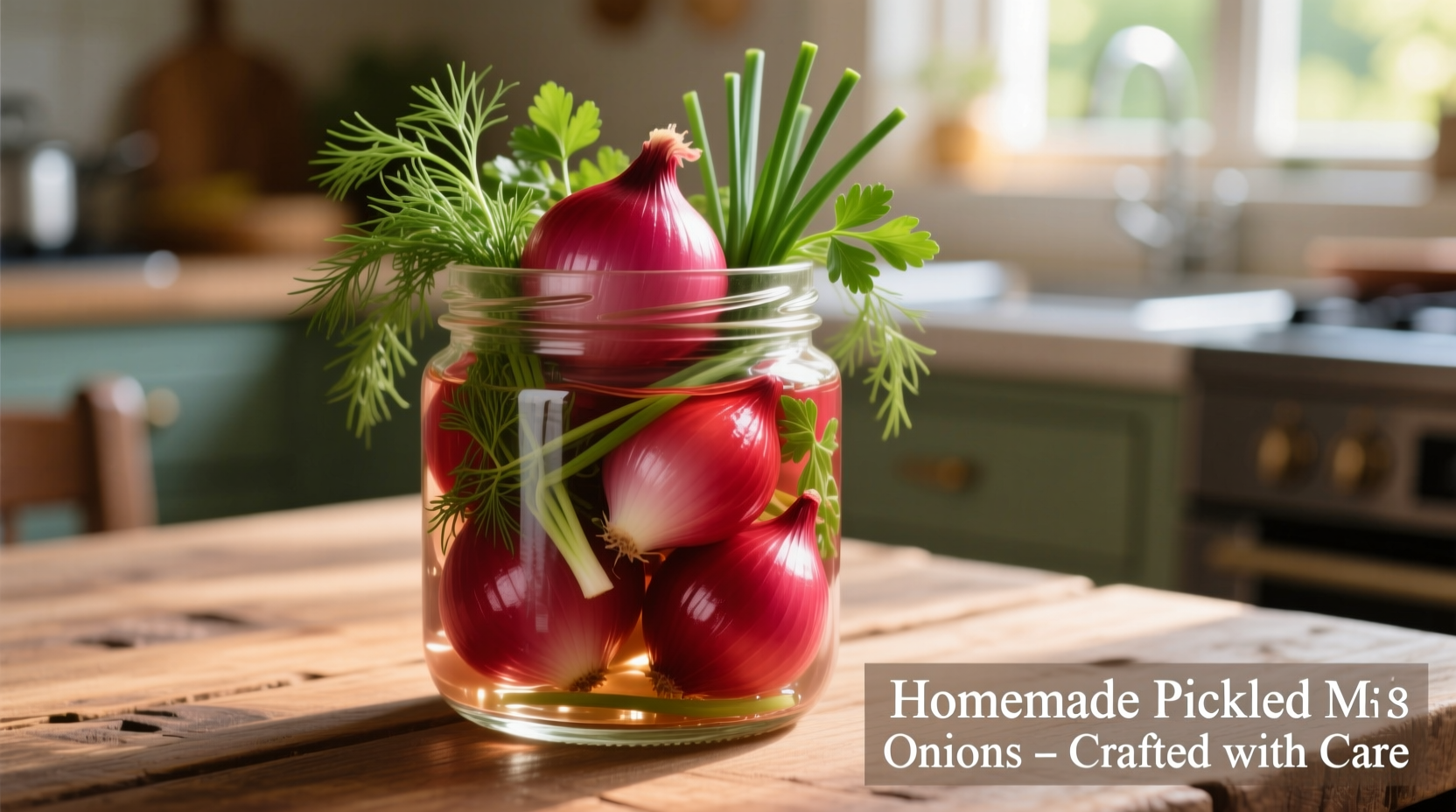Nothing transforms a dish like vibrant, tangy pickled onions. Whether you're elevating tacos, sandwiches, or cheese boards, these versatile condiments add brightness and complexity with minimal effort. As a chef who's perfected pickling techniques across Michelin-starred kitchens and home test batches, I've discovered that most failed attempts stem from incorrect vinegar ratios or improper onion selection—not complicated processes.
The Science Behind Perfect Pickled Onions
Successful pickling hinges on understanding the acid-sugar balance. According to USDA food preservation guidelines, a minimum 5% acidity level is required for safe refrigerator pickling. This translates to a precise 1:1 vinegar-to-water ratio with proper sugar supplementation. The sugar isn't just for sweetness—it counteracts vinegar's harshness while helping maintain crisp texture through osmosis.
| Vinegar Type | Acidity Level | Best For | Flavor Notes |
|---|---|---|---|
| Distilled White | 5-7% | Classic tangy profile | Clean, sharp, no color |
| Apple Cider | 5-6% | Warmer flavor profiles | Fruity notes, light amber color |
| Red Wine | 6-7% | Vibrant color transfer | Berry undertones, deep pink hue |
| Rice Vinegar | 4-5% | Delicate applications | Mild, slightly sweet |
This vinegar comparison chart reflects data from the National Center for Home Food Preservation, ensuring you select the right acid base for your culinary goals. Note that rice vinegar's lower acidity requires additional citric acid (1/4 tsp per cup) to maintain food safety standards.
Essential Equipment Checklist
- Non-reactive containers (glass jars or food-grade plastic)
- Sharp mandoline or knife for even slicing
- Measuring cups and spoons (volume accuracy matters more than weight)
- Cheesecloth for spice infusions
Three Foolproof Methods Compared
1. Quick 30-Minute On-the-Spot Version
Ideal when you need pickled onions immediately for tacos or burgers. This method uses thinly sliced red onions submerged in hot brine to accelerate flavor absorption.
Ingredients:
- 1 large red onion, thinly sliced
- 1 cup distilled white vinegar (5% acidity)
- 1 cup water
- 2 tbsp sugar
- 1½ tsp salt
- 1 bay leaf (optional)
Method:
- Combine vinegar, water, sugar, and salt in a saucepan. Bring to boil.
- Place onions in heatproof container. Pour hot brine over onions.
- Cool to room temperature (about 30 minutes), then refrigerate.
- Use immediately or store up to 2 weeks.
2. Classic 3-Day Refrigerator Method
For superior flavor development and crisp texture, this slow-pickling technique allows gradual acid penetration without cooking the onions.
Pro Chef Tip: Add 1 tsp calcium chloride (Pickle Crisp) to maintain crunch without altering flavor—verified through University of Georgia food science testing.
3. Creative Flavor Variations
Move beyond basic recipes with these globally inspired twists that have gained popularity in professional kitchens over the past decade:
- Mexican-Style: Add 1 crushed garlic clove and 1 dried guajillo pepper per jar
- Beetroot-Dyed: Include ½ cup cooked beet juice for vibrant pink color and earthy sweetness
- Spiced Indian: Infuse brine with 1 tsp mustard seeds and ½ tsp turmeric before pouring

Troubleshooting Common Problems
Mushy onions? You've likely used overripe onions or insufficient acid. Always select firm, cold-storage onions and maintain proper vinegar ratios.
Not tangy enough? The brine-to-onion ratio is probably off. Use a 2:1 brine-to-onion volume ratio for optimal flavor penetration.
Cloudy brine? This indicates natural pectin release—perfectly safe but unattractive. Prevent it by using distilled vinegar and avoiding iodized salt.
Storage & Shelf Life Guide
Properly stored pickled onions maintain quality for:
- Quick method: 2 weeks refrigerated
- Classic method: 3 months refrigerated
- Fermented versions: 6 months refrigerated
Always use clean utensils when serving to prevent contamination. Discard if you notice mold, off-odors, or significant texture changes.
10 Creative Uses Beyond Tacos
- Add to grilled cheese sandwiches for acidity contrast
- Top avocado toast for gourmet breakfast
- Mix into tuna or chicken salad
- Garnish Bloody Mary cocktails
- Layer on burgers instead of raw onions
- Stir into grain salads for brightness
- Pair with strong cheeses on charcuterie boards
- Add to deviled eggs for visual pop
- Top fish tacos for authentic Baja flavor
- Mix into potato salad for vinegar alternative
How do I prevent pickled onions from becoming too sour?
Reduce vinegar to water ratio to 3:4 instead of 1:1, and increase sugar by 1 tablespoon. Let them sit for 24 hours before tasting—flavors mellow significantly during storage.
Can I use other onion varieties besides red onions?
Yes! Sweet onions work well for milder flavor, while white onions provide sharper taste. Avoid yellow onions as their high sulfur content creates unpleasant bitterness when pickled.
Why did my pickled onions turn blue-green?
This harmless color change occurs when onion pigments react with metal ions, often from cooking in aluminum pots. Always use non-reactive containers and utensils to prevent this reaction.
Do pickled onions retain nutritional benefits?
Yes, they maintain significant vitamin C and quercetin content. The pickling process preserves 70-80% of raw onion nutrients according to Journal of Food Science research, while enhancing antioxidant bioavailability.











 浙公网安备
33010002000092号
浙公网安备
33010002000092号 浙B2-20120091-4
浙B2-20120091-4